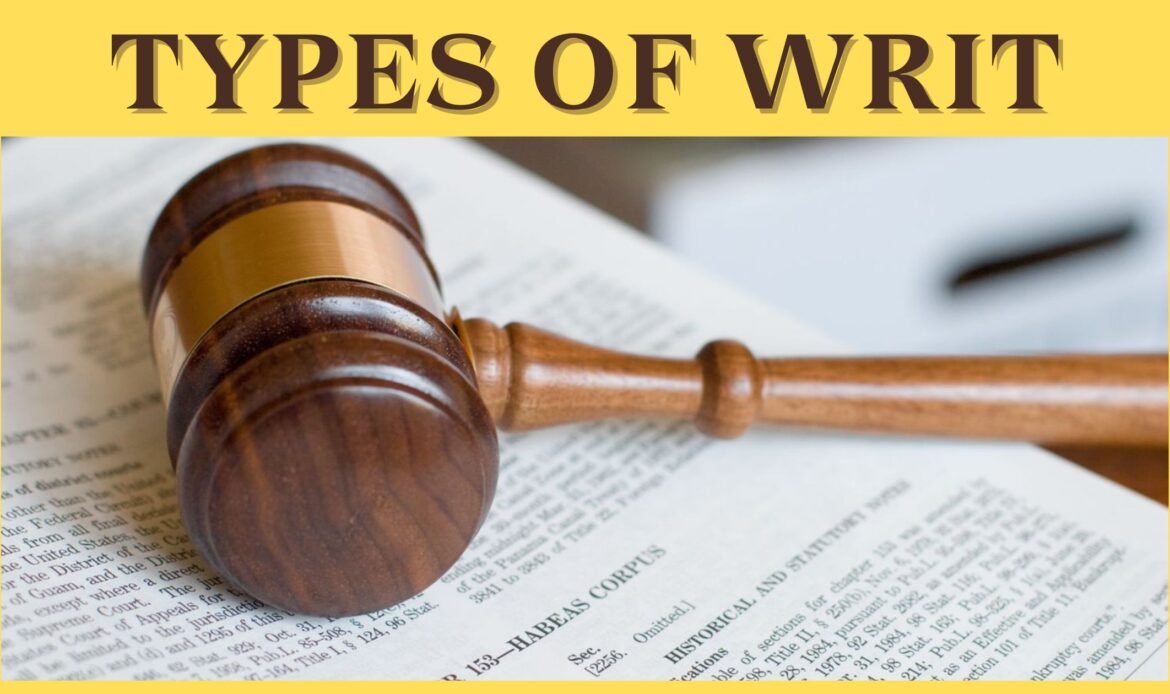Imagine you get detained for no reason. Or, a government official refuses to do their duty. What can you do? How can you protect your rights? Well, these are the cases when a writ provides a solution in India.
A writ is a formal order from a court. The Indian Constitution allows courts to issue writs to protect individual rights. Under Articles 32 and 226, the Supreme Court and High Courts can use writs to ensure justice. Those writs can help in many situations.
They can free someone from unlawful detention. They can command an official to perform their duty. Then, they can stop lower courts from overstepping their bounds. They can correct errors made by lower courts. Lastly, they can challenge someone’s right to hold a public office.
Want to know how many types of writs are there in India? If yes, keep reading this blog! Today, we will explore its 5 types, see how they work, and why they are important.
The Importance of Writs in Indian Democracy
Wondering why we are emphasizing this much on writs? Well, they are like a cornerstone of the Indian judicial system, ensuring checks and balances between the judiciary and executive.
They provide a swift remedy against the infringement of rights and misuse of power. By empowering individuals to challenge unlawful acts, writs uphold the rule of law and protect democratic values.
How Many Types Of Writs Are There In Indian Law?
Now, let us tell you about the five types of writs that exist in India.
-
Habeas Corpus: Protecting Personal Liberty
The writ of Habeas Corpus translates to “produce the body.” It is a powerful tool to safeguard personal liberty. When someone is detained unlawfully, this commands the person or authority holding them to bring the detainee before the court. The court then examines the legality of the detention. If found unlawful, the court orders the release of the individual.
Example: Imagine a scenario where a person is detained without a proper arrest warrant. A relative can file a Habeas Corpus petition, compelling the police to present the detained individual in court. The court will review the circumstances and can order immediate release if the detention is unjustified.
-
Mandamus: Commanding Public Duty
Mandamus means “we command.” This writ directs a public official, government department, corporation, or lower court to perform a duty they are legally obligated to complete but have failed to do. It ensures that public authorities fulfill their responsibilities and follow the law.
Example: Suppose a public authority fails to issue a license that a citizen is legally entitled to. The aggrieved person can file a writ of Mandamus, and the court can command the authority to issue the license.
-
Prohibition: Halting Judicial Overreach
The writ of Prohibition is preventive in nature. It’s issued by a higher court to a lower court, instructing it to stop proceedings that exceed its jurisdiction. This writ ensures that lower courts do not overstep their legal boundaries.
Example: If a lower court is hearing a case that falls outside its jurisdiction, a party can approach a higher court to issue a writ of Prohibition. This writ will stop the lower court from continuing the proceedings, thus preventing judicial overreach.
-
Certiorari: Correcting Jurisdictional Errors
Certiorari is issued to quash an order passed by a lower court, tribunal, or quasi-judicial authority. This writ corrects jurisdictional errors where the lower body has acted without or beyond its authority. It ensures the legality and correctness of judicial and quasi-judicial decisions.
Example: If a tribunal issues a decision beyond its power, an affected party can seek this from a higher court. The higher court will review the case and can nullify the erroneous decision.
-
Quo Warranto: Challenging Unauthorized Authority
The writ of Quo Warranto means “by what authority.” It is used to challenge the legality of a person’s claim to a public office. This writ prevents individuals from unlawfully holding public office. This ensures that only those with legitimate authority occupy such positions.
Example: If someone holds a public office without the required qualifications, any interested person can file a writ of Quo Warranto. The court will then assess whether the person has the right to hold that office. It can remove them if their claim is found invalid.
Final Words
As you can see, there are five types of writs in India. They empower citizens to seek redress against unlawful actions and ensure that authorities operate within their legal limits. Understanding these writs is essential for every citizen. If you want help with any of these, contact the best law firm in Kolkata. At Kshetry and Associates, we have trusted legal advisors in Kolkata.

